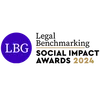In patent applications for inventions in the field of chemistry, it is often necessary to use parameters to define a composition or process for which patent protection is sought. #
This situation can arise, for example, when a composition with improved functionality has been invented, but the compositional/structural reason for that improvement is uncertain. In these circumstances, a claim directed to a composition that achieves a particular value of a specified parameter might be useful.
What do the EPO's Guidelines say? #
When there are parameters in the claims, particular attention needs to be paid to the requirements of the European Patent Office (EPO).
In relation to parameters, the EPO's Guidelines for Examination (the Guidelines) state:
"Parameters are characteristic values, which may be values of directly measurable properties (e.g. the melting point of a substance, the flexural strength of a steel, the resistance of an electrical conductor)"
"The characteristics of a product may be specified by parameters related to the physical structure of the product, provided that those parameters can be clearly and reliably determined by objective procedures which are usual in the art"
A critical part of the above paragraph is that the parameter "can be clearly and reliably determined by objective procedures which are usual in the art".
Clarity of a Claim that includes Parameters #
If you are pursuing a claim that includes one or more parameters, then in order for it to conform to Article 84 (clarity) of the European Patent Convention (EPC) each parameter needs to meet the following requirements:
(i) the claims must be clear in themselves when read by the skilled person (not including knowledge derived from the description);
(ii) the method for measuring a parameter (or at least a reference thereto) must appear completely in the claim itself; and
(iii) an applicant who chooses to define the scope of the claim by parameters needs to ensure that the skilled person can easily and unambiguously verify whether they are working inside or outside the scope of the claim.
Thus, for claims that are going to be pursued at the EPO and which include one or more parameters, it is important to ensure that either (a) the method for measuring the parameter(s) appears in the claim, or (b) the description includes text that describes the method for measuring the parameter(s) and which can easily be added to the claim during prosecution before the EPO. If you are pursuing option (b), it is preferable to have some text in the description that can be added verbatim to the claims in order to meet the EPO's strict requirements regarding the basis for any amendments that are made.
The Guidelines set out that the requirement under point (ii) above may still be met if it can be shown that:
(a) the measurement method to be employed belongs to the skilled person's common general knowledge, e.g. because there is only one method, or because a particular method is commonly used; or
(b) all the measurement methodologies known in the relevant technical field for determining this parameter yield the same result within the appropriate limit of measurement accuracy.
Thus, whilst the claims of a European patent application should include the method for measuring any parameters mentioned, it may still be possible to meet the EPO's clarity requirements if the method is not described.
Open-ended Ranges #
A further point to consider in relation to parameters in patent claims is the use of open-ended ranges, e.g. "at least X". In certain circumstances, open-ended parameter ranges may not be considered to meet the requirements of Article 83 EPC (sufficiency). This can be on the basis that such ranges include embodiments not obtainable when using the invention disclosed in the patent.
EPO Board of Appeal decision T 0398/19 (see the Case law of the Boards of Appeal) sets out some detailed reasoning on this issue. In particular, the decision states that: “the sole fact that certain features were expressed in terms of open-ended ranges was not enough to support an objection of insufficient disclosure”. It was also considered in this decision that: "it was common practice in the technical field concerned to characterise a product in terms of open-ended ranges and the claimed subject-matter often omitted parameters equally important for the claimed product's efficacy". Thus, the requirements of Article 83 EPC were considered to be met.
Practical Advice #
In practice, it might be possible for a European patent application including claims with open-ended parameter ranges to meet the requirements of Article 83 EPC. However, it is preferable for the description to mention reasonable upper limits to any open-ended ranges. This is so that these upper limits can be added to the claims if required. Again, it is important for these ranges to be expressed in a way that also meets the EPO's strict requirements regarding the basis for any amendments.
If you have any questions about using parameters in your patent applications, your Murgitroyd attorney will be pleased to assist you. Alternatively, please contact our specialist team who will be able to provide advice.





















